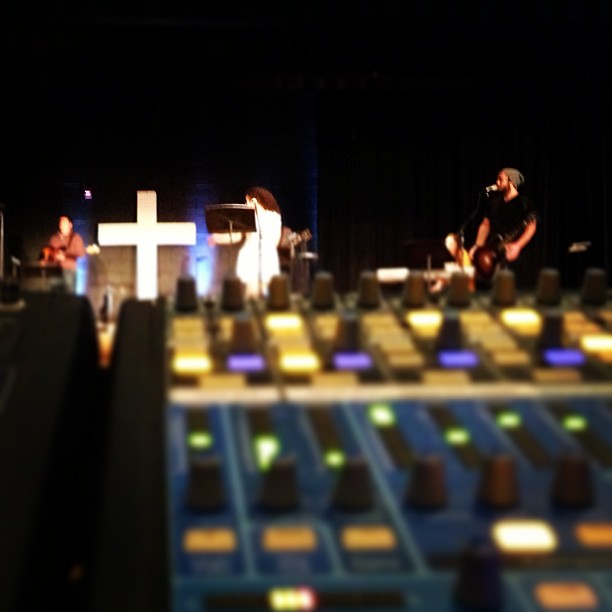Out In the Field: When Things Go Wrong...
The Backstory:
One of the other hats that I wear is volunteering on the production teams at my church, Salem Chapel in Winston-Salem, NC. Typically, once a month, I serve as the audio engineer for three services over one weekend.
Salem Chapel is a mobile church. In many aspects it is like working for a small production company. Every Saturday we show up at a local middle school at 2:00 PM, and unload a trailer full of equipment. Teams of people work around the school setting up different areas of the church. My primary job is to unload the road case that contains the audio consoles, and plug it all in, and have it ready for the worship team to practice at 3:00. Our first weekend service kicks off at 5:00 PM. Things wrap up at 6:30 and the production team and church staff are usually leaving around 7:00 after debriefing.
Sunday morning the production and worship teams arrive at 8:00 for a short practice. The first Sunday service runs from 9:00 to 10:30, and our final weekend service runs from 11:00 to 12:30. Then we pack everything back up, and load it back onto the trailer.
The Problem(s):
Our equipment rides in the back of a 16 foot trailer, bouncing up and down with every bump in the road. Things shift in road cases. Sometimes gear fails. Then add the fact that we get the get the equipment out and have to connect audio, lighting and video connections,test the system and have it ready to roll for practice in about an hours time. Sometimes we just forget to plug stuff in. Whi is where our first problem this weekend entered.
"I Can Hear You, But I Can't Hear the Rest of the Band."
This is not something I really want to hear anyone in the band say. It means there's a breakdown somewhere in the signal path. There was a very valid reason that my friend Jake couldn't hear the rest of the band. I could look at the meters on the console and tell I had input on all of the channels. I looked at the lights on the front of our Aviom Personal Monitor input module. It was powered on. I also knew that the Aviom system was on, because Jake could hear me. Then I remembered, during set up, I had not plugged in the DB25 connectors that feed the monitor system. The reason that 3 vocals, 2 acoustic guitars, 2 electric guitars, an electric bass, and two channels of keyboards could not be heard was that their direct outs were not connected.
Fortunately, it wasn't a huge deal. We caught the problem early, really even before practice started. What can we learn from this?
- At some point we might want to consider making a checklist or punch-sheet for setting up the system. That way we set things up quickly and consistently every single time.
- To quote one of my college instructors, Thomas Johnson, "It's all about signal flow." It is absolutely critical to understand how signal flows through your PA system. Where does that sound come from, and where is it supposed to go? If I can hear this, and I am supposed to hear this and that, and I cannot hear that, then why can't I hear that?
Take the time. Learn your system. Ask questions. Read manuals. Even take the time to look at the block diagrams in the manuals. It can save you from having a really bad day, or at least save you a bit of stress.
~Andy


